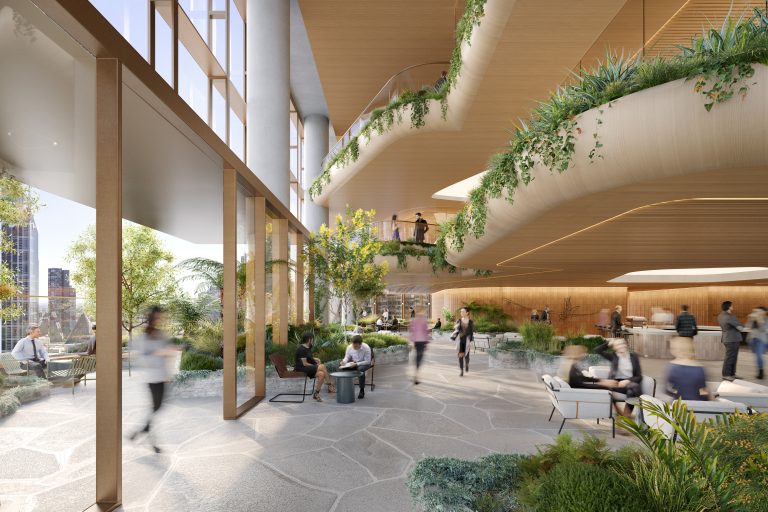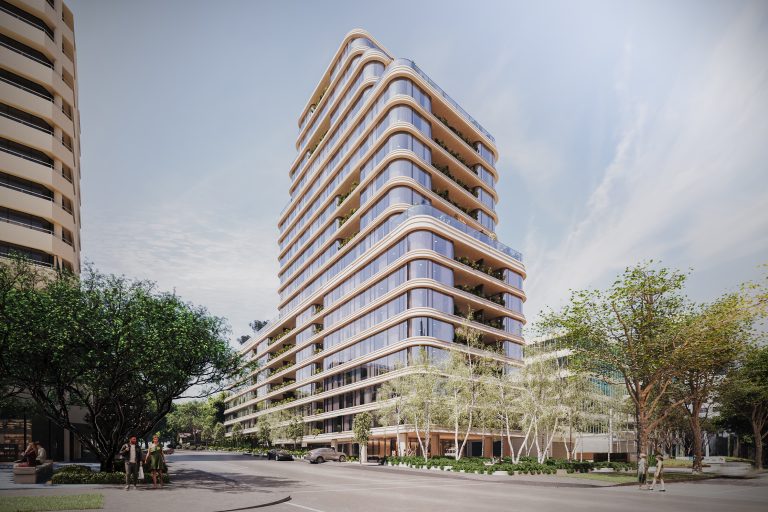28 Sep 2017
How Brisbane’s Architecture Embraces our Sunshine State of Mind

Brisbane’s best contemporary domestic architecture is often characterised by simple but sensual spaces that flow effortlessly from inside to out.
At the urban scale, Brisbane City Council’s design guidelines advocate Buildings that Breathe. Architects and urban designers understand that our subtropical climate offers a great opportunity to rethink conventional design approaches.
Here’s how Brisbane’s built environment caters to our sunshine state of mind.
Climate, lifestyle and urban design
Brisbane’s salubrious climate means we celebrate the natural environment. It is often as comfortable outside our buildings as in them, so much socialising, dining, sport and recreation takes place outdoors in the garden, at the park or on or beside the water.
A choice of microclimates from inside to outside, with exposure or protection from sun and breeze, allows us to fine tune our sensory experience.
Brisbane’s undulating topography and meandering river have created a city of many distinctive suburbs and neighbourhoods, but it is the open spaces and the outdoor places that create the city’s visual identity.
The open spaces of the river valley link a network of parklands from the nearby mountain ranges to the bay and islands. The common characteristic that unites Brisbane’s best new development precincts is a strong commitment to the public outdoor realm to create memorable places for enjoyment of sun, shade and breeze and the beauty of subtropical planting.
Over the past decade in our major civic projects Architectus has progressively sought to link to and create open urban spaces in the city. Even major institutions, such as the Gallery of Modern Art or QEII Courts of Law that require exceptional levels of environmental and security control are designed to provide transparency and balcony linkages to the outside and a strong public flow to generous urban landscapes.
The recently opened Sunshine Coast University Hospital, 80km north of Brisbane, is a development of this thinking. Despite the scale and complex of this $1.8 billion project and the need for highly controlled clinical spaces, the public approach and entry to the space is conceived as a relaxed and informal semi-enclosed outdoor room.
The hospital’s key space is a 200m-long landscaped courtyard that provides public orientation and way-finding throughout the hospital.
Brisbane’s climatic architectural connections
Queensland’s early residential architecture developed shady verandah, deck and undercroft zones for living outside the normal line of enclosure. Residential architects in southeast Queensland have a well-deserved international reputation for the creation contemporary living spaces that celebrate this indoor/outdoor pattern of living.
Recent research highlights the cognitive stimulation that flows from connection to the outdoor environment. We have long recognised the benefits of an interesting view in the workplace as a desirable source of visual stimulation, contemplation or reflection, and views to nature have become more highly valued for their beneficial biophilic responses.
Opening our daily experience more fully to the external environment, with its natural variations in light and movements and a lively, variable environment of smells, sounds and sensations.
In our particular climate, we believe we need to question many of the assumptions that lie behind conventional architectural forms.
The glazed and sealed office tower makes a lot of sense when external conditions are uncomfortably cold or excessively hot. It is an appropriate response to the colder North American and European climates where it was developed and, with a large input of energy, can provide comfort in the heat of the tropics.
In the frequently beautiful days of the year that we experience, maintaining an energy-intensive defensive envelope makes less sense.
Our workplace design increasingly involves creating opportunities for outdoor or semi-outdoor spaces as key aspects of the creative workflow.
Architectus’ own office has been designed to open onto an inner-city roof terrace as a place for informal meetings, breaks and socialising. It offers a chance to sit in the sun or the breeze, or to interact with the garden and to discretely take private phone calls.
Mixed-mode ventilation design allows the sliding doors to the deck to be opened to enjoy the Brisbane climate, and minimise the use of active air-conditioning.
Designing a sustainable city
One of the most innovative rethinking of architectural conventions is currently under construction on a central city riverfront site. The 47-storey residential tower at 443 Queen Street has been jointly designed for CBus Property by Elizabeth Watson-Brown of Architectus and Richard Hassell from WOHA in Singapore. When completed this will be Brisbane’s first fully cross-ventilated residential highrise.
In many residential towers as much as 60% of the total operational energy is used to mechanically ventilate basement carparks and to air-condition and light shared lift lobbies and circulation corridors.
At 443 Queen Street these spaces are lit all day and naturally ventilated. Lifts open directly into wind-shielded arrival gardens at each level creating a shared neighbourly zone with spectacular views. Apartments are designed to maximise passive ventilation and include small screened deck spaces.
Brisbane’s leading architects and urban designers have long understood our distinctive local climate and subtropical lifestyle.
At the domestic scale this has produced a distinctively sensual, open and inviting residential architecture, but it has historically proved much more difficult to imbed these same qualities in major projects.
The Brisbane City Council’s Buildings that Breathe initiative has provided strong support for designers and developers to work more closely with the potentials of our salubrious subtropical climate.


